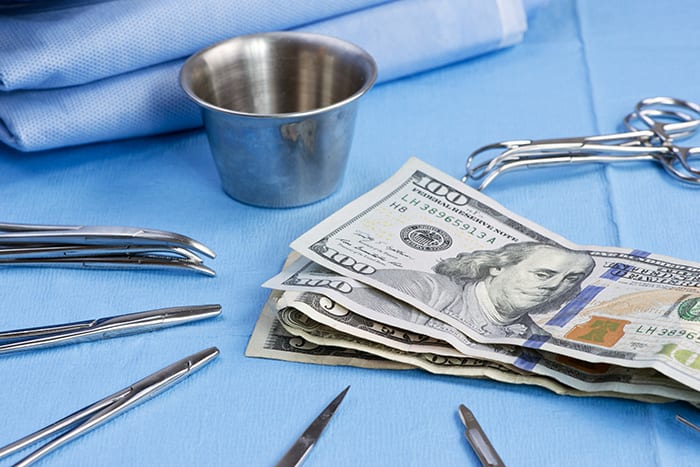Let’s cut straight to the chase. If you’re asking how much breast reduction surgery costs, chances are you’ve been dealing with something more than just physical discomfort—whether that’s chronic back pain, drooping shoulders from tight bra straps, or even self-confidence issues every time you look in the mirror.
This isn’t about vanity. It’s not even really about appearance, although that might be part of it. This is about feeling comfortable in your own skin, being able to work out without fear of injury, or simply walking up a flight of stairs without breaking a sweat from the weight alone.
And yeah, let’s be honest—cost matters. Because while this surgery can be life-changing, it also means investing some serious cash. The good news? We’re going to walk through everything with clarity and care, just like a conversation over coffee with someone you really trust.
Avg Breast Reduction Price
So… what are we talking about here when we say “cost”? Well, the national average for breast reduction surgery in the U.S. hovers somewhere between $5,000 and $9,965. But here’s the kicker—and I really want this to sink in—you could pay as little as $2,500 if insurance covers it… or stretch all the way up to $21,000+ out of pocket.
A study by RealSelf found that the average patient ends up paying around $9,965. However, according to the American Society of Plastic Surgeons (ASPS), the surgeon’s fee alone averages $6,771, which doesn’t even cover anesthesia or facility costs (we’ll get to those later).
So why such a big range? Three main reasons:
- Where you live (cities vs rural areas)
- How experienced your surgeon is
- Whether or not insurance steps in to help out
Breaking Down the Total Cost

Alright, let’s unpack the price tag. When someone quotes you a cost for breast reduction surgery, it usually includes more than just what your surgeon charges. Here’s the full breakdown:
What’s Included in Most Quotes
Typical components include:
- Surgeon’s Fee: Covers the actual procedure and post-op visits
- Anesthesia Costs: Ranges from $1,000 to $1,500
- Facility Fees: Operating room, pre-op testing, and recovery space (usually $500–$2,000)
So even if your surgeon charges $6k, you’re still looking at adding at least another couple thousand on top. Just saying that so there are no surprises once you sit down with a binder of paperwork.
Hidden (But Not Secret) Costs
Yep, there are some extras that often sneak into the final bill:
- Post-op garments or compression bras
- Pain medication after surgery
- Physical therapy (if required during recovery)
- Unexpected revision procedures (though rare, they can happen)
All of these are usually optional—and your doctor will tell you whether you might need them ahead of time—but better to know sooner rather than later!
Do Insurance Companies Cover It?
For so many women, this question changes everything. Because if insurance will pitch in, suddenly a lot of that financial stress melts away.
The short answer? Yes — but only under certain conditions. Insurance companies generally consider breast reduction medically necessary when large breasts cause:
- Chronic neck or back pain
- Skin irritation under the breasts
- Deep grooves on shoulders from tight bra straps
- Limited range of motion and difficulty exercising
They usually ask for proof that you’ve tried other treatments first—like physical therapy, chiropractic work, prescribed pain medications, and special bras—for at least a year before approving coverage.
Your plastic surgeon can help put together a case for insurance approval—and most practices have staff dedicated to navigating this process. Pro tip: Before signing up, ask if their team handles insurance filing. That can save you a ton of headaches later!
Actual Cost by U.S. Region
Just like house prices vary wildly across cities, so does the cost of surgery—mostly because of overheads and surgeon demand.
| City | Average Total Cost |
|---|---|
| New York City | $14,000–$19,000 |
| Los Angeles | $13,500–$18,000 |
| Philadelphia | $8,000–$12,000 |
| Las Vegas | $7,000–$9,000 |
| Salt Lake City | $5,000–$8,000 |
Cool tip: If you’re considering traveling somewhere else for a lower cost—go in person for consultation first. Face-to-face discussions matter more than saving $200 on a Zoom call with someone far away.
Is There a Minimum Weight Requirement?
That’s a common question—and I hear it asked a LOT. Some folks worry that being overweight means they automatically won’t qualify. Truth time? There’s no exact weight requirement, but most boards or guidelines suggest being within a reasonable body mass index (BMI) range for best outcomes.
That means hitting something close to a healthy weight (your healthy weight) to reduce surgical risk and give better results. Some doctors may recommend losing 10 to 25 pounds before proceeding, especially if you’re close to the higher end and have multiple health concerns.
BMI aside, your plastic surgeon will consider the size and shape of your breasts, how much excess tissue there is, and whether you have any ongoing symptoms (like those listed earlier). Just ask during your consultation—they’ll give you the full picture.
How Long Does the Surgery Take?
For most people, the actual procedure takes between 2 to 4 hours.
I know, that seems long. But this isn’t like a walk-in-and-go kind of fix. Your surgeon is doing complex tissue reshaping and repositioning to ensure symmetry, safe removal, and natural-looking results. Those things take focus and precision, which takes time.
Don’t panic, though. Most clinics schedule general anesthesia, meaning you’ll be completely asleep and comfortable throughout the entire thing.
What About Recovery?
Okay, I know what you’re really thinking right now—that part no one likes to ask but wants to know deep down: What happens after?
When Can You Get Back to Normal Life?
Truthfully, healing varies per person, but here’s a rough timeline:
- Week 1: Rest. Get help around the house. No lifting anything over 10 lbs.
- Week 2–3: Light activities like walking allowed, but avoid high-intensity exercise.
- Week 4–6: Most patients are back to light work routines, maybe even driving (after approval).
- Full Recovery: 6–12 weeks depending on how you respond
I’ll say it again—this is a deep tissue procedure. So while many people resume normal life within a month or two, full recovery takes time.
Will There Be Scars?
Yes—but they’re manageable and often well-hidden. One of the most common myths about breast reduction is that the scars ruin everything. But modern techniques make sure they’re minimized as much as possible, usually placed in natural folds or around the areola.
- Vertical Scar (“Lollipop”) — Less invasive, leaves a vertical scar from the nipple to the breast fold.
- Inverted T (“Anchor”) — Used for larger reductions, includes both vertical and horizontal incisions.
- Circumareolar — Around the edge of the areola, less common unless you’re removing minimal tissue.
Your surgeon can walk you through the options based on what you’re comfortable with.
Is It Super Painful?
Another real fear—and totally valid. Most people anticipate a ton of pain after surgery.
But here’s what I want you to remember: When you get home, you’ll have pills. Strong ones. And most importantly, your surgeon knows the drill. They want you comfortable, so they’ll make sure you get what you need for those first few days.
Most patients report moderate discomfort—a bit like muscle soreness or pressure—for the first few days. By the second week, it starts to fade.
(And trust me—you’ll feel better mentally and emotionally long before you feel physically better!)
Is Surgery Worth the Cost?
Here’s where emotions matter just as much as facts. For many women, yes. It absolutely is worth it.
Imagine being able to wear fitted shirts, do push-ups again, or hike without worrying your back will give out halfway through. Or simply waking up without dreading your daily battle with your bra.
Still, it’s an investment—not just in dollars, but in mental health, recovery time, and setting expectations. So before making the leap:
- Do research and find a surgeon you truly connect with
- Ask all your questions—even the small and weird ones
- Read reviews, look at real patient photos, speak honestly about pain and recovery
Sometimes money shouldn’t be the biggest factor—you’re investing in a future version of yourself that feels comfortable and empowered. When looked at that way, it might feel less like an expense and more like a gift.
Making an Informed Decision
The cost of breast reduction surgery isn’t just a dollar value—it’s a combination of prep, procedure, recovery, financial planning, and realistic expectations.
If you’re thinking ahead and wondering whether you can fit it in your budget, start by booking a consultation. Talk to a few surgeons who specialize in breast reductions, see how their teams work together, and get clear quotes that explain exactly what you’ll be paying.
Know what your insurance covers. Many policies only require one thing: proof that the procedure will improve your life beyond aesthetics.
We’ve covered:
- Average costs by region
- Insurance eligibility factors
- Scarring techniques
- Recovery tips
- Pain management realities
Use this knowledge to guide your next steps, but never let cost stop you from asking questions or seeking the best care possible.
Final Thoughts
Looking back, you’ve made it this far because you wanted honest, useful information. And I hope that’s exactly what this article delivered. Not sugarcoated links or clickbait headlines—but real guidance, backed by solid sources, written with warmth and understanding.
What matters most—whether it’s price, scars, physical impact, or future comfort—is that you feel supported throughout your journey. If you’re feeling overwhelmed now, take a breath. Thousands of women have walked this road—and found immense relief on the other side.
If you’ve read this far, let’s hear it: what’s the #1 question still swirling in your mind about breast reduction surgery? Drop me a note or comment below—I’d love to talk this through with you.


















Leave a Reply
You must be logged in to post a comment.